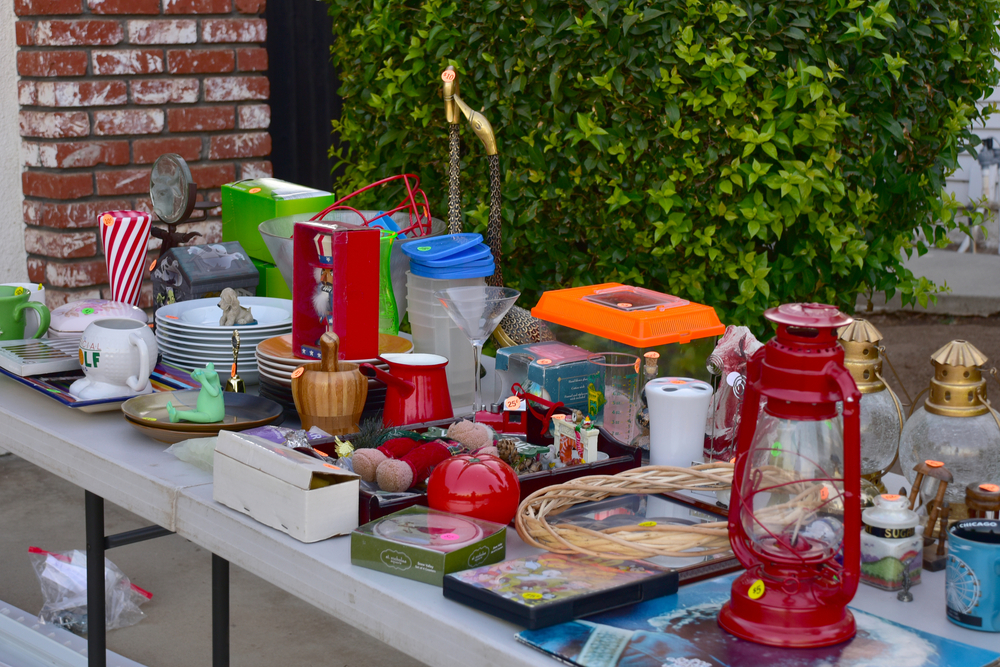My wife and I just bought a new car… well, new for us at least. I mean, three years old is still new, right? Anyway, with her getting the new car, her old car has become my “work truck” (at 190,000 miles) and my old car is being given to someone we know that needs a reliable vehicle. That means a bunch of juggling, especially of the emergency gear that I keep in our vehicles.
Let me start by saying that I don’t keep the same emergency gear in both vehicles. There are some things, like tools, which she wouldn’t have the slightest idea what to do with, should her car break down. For times when we’re traveling in her car, I add things which I could use in an emergency, but she can’t, like tools. Theoretically, those shouldn’t be necessary with a new car, but you can never be sure of that.
For the purpose of this article, I’m going to be talking about what I carry in my car, not my wife’s car. Keep in mind though, that it never makes any sense to carry something with you that you can’t make use of, whether that be in your car or your bug out bag. Of course, the other option is to learn how to use those items, so that you’re not just hauling round dead weight.
Vehicle Repair
We can actually break down the things we carry for emergencies into a couple of different categories, such as vehicle repair and personal survival; so, let’s start out with vehicle repair. This is the one that’s most likely to be forgotten by preppers. Yet I can guarantee you, from personal experience, that simple mechanical breakdowns can easily leave you stranded overnight in out of the way places.
We’re not talking about carrying enough with you, so that you can do any and every mechanical repair that your vehicle might need. We’re talking about the commonplace maintenance items that can go wrong, like belts, hoses, starters and alternators. Still, the worst side-of-the-road repair I ever had to do was replacing the head gasket on a mini-van I used to own. We were on the side of the road, in the middle of nowhere, and a good Samaritan stopped to take me to the auto-parts store for a head gasket kit. Other than that, and the torque wrench that I borrowed from the store, I was able to do the entire repair with a rather limited number of tools.
So, what do I mean by a limited number of tools?
- Socket set – with a piece of pipe I can use to extend the handle
- Combination wrench set
- Pliers
- Screwdriver with interchangeable bits
- One of those jump-starters for when the battery goes dead
In addition to that, it’s a good idea to carry at least the minimum of vehicle fluids and rubber parts:
- Spare belts – note that with serpentine belts, you probably need a special tool to replace them. if you don’t have that tool, you’d need to borrow it from an auto parts store anyway. So, there’s no sense carrying it.
- Spare hoses, especially the radiator hoses.
- Fluids – brake fluid, power steering fluid, engine oil
- Fix-a-flat
- Water
There’s a chance that you’ll need to crawl under the car for something, so it’s a good idea to have something you can place on the ground, either a tarp (which can be useful for other things) or a large piece of cardboard. Of course, make sure you have a good, functioning jack in the car. I don’t trust scissors jacks for more than changing a tire, so I keep a small hydraulic jack in the car as well.
Personal Survival
Any breakdown of your vehicle can put you into a survival situation. I’ve been stranded on the side of the road in a blizzard. For that matter, I was stranded for quite a few hours, along with several hundred other people, on the bridge over Lake Pontchartrain in Louisiana, due to a serious accident with a fuel truck. That was a fun one, because there were no bathrooms, it was impossible to go sneaking off into the woods (the swamp was 30 feet below us) and there was no firewood.
Looking at these sorts of situations, it’s imperative that we have the necessary equipment and supplies in our vehicles to survive at least a couple of days, should we end up stranded somewhere. I say a couple of days, knowing that state police cover every mile of state and federal highways, as well as county roads at least once per day. While that might indicate that 24 hours’ worth of supplies would be enough; you just never know. I’d rather have too much, than too little.
Basically, this means meeting the same needs that you have to meet for a bug-out-bag, just not to the same depth. After all, we’re talking a shorter period of time. Still, you need to consider your top survival priorities and make suer you’ve got them covered.
Shelter
Your vehicle will provide better shelter than anything you can build or erect. However, if your engine isn’t running, you might need a heat source, especially in the winter. A few slow-burning candles can make provide enough heat to keep the cabin of the vehicle above freezing, especially if you drape survival blankets over the windows, helping to reflect that heat back inside the vehicle.
In addition to the vehicle itself and something to produce heat; you’ll want to do whatever you can to retain your body heat. That means always traveling with a seasonally appropriate jacket, even if you’re not wearing it. Keep a blanket or two in the vehicle as well; preferably in the passenger compartment.
Water
You should already be carrying water in the vehicle anyway, as coolant for your engine. If that water is tap water, you can drink it as well. Just make sure you’ve got enough for both uses. In addition, make sure you have a water purifier, just in case you go through your water supply. It might also be useful to have a contain that you can scoop snow into, bringing it into the relative warmth of your vehicle to thaw.
Food
In reality, you won’t really need food, if all you’re going to be stranded for is a day or two. Nevertheless, we all tend to feel uncomfortable if we don’t get to eat. To prevent anyone in the vehicle from starting to look at others as a potential meal, it might be good to have at least some food along. I keep some granola bars and high-energy bars in the car at all times. They don’t take up a lot of room, are pretty much immune to heat and provide a quick boost of energy, when needed.
I also keep gum and hard candies in the car. Both are useful for staving off feelings of hunger, especially the mental hunger of “I want something to eat,” rather than the physical hunger that comes from an empty belly. As with the high-energy bars, they don’t take up a lot of room, although heat will cause chewing gum to dry out.
General Survival Gear
I also keep a general survival kit in every vehicle. It’s amazing how often things like a lighter or multi-tool come in handy on an every-day basis which has nothing to do with survival. Should I ever need to abandon my vehicle and take out cross-country, that survival kit will make a huge difference. Although, to be honest, I can’t see many times when that would be necessary.
First-Aid
Perhaps one of the most important pieces of survival gear I carry in my vehicle is a good first-aid kit. By “good” here, I’m referring to a trauma kit; something that is robust enough to take care of serious injuries. While I have never suffered those injuries myself, I have been the first one to come across a number of accidents, where people needed treatment. Even though I’m not a medical expert, I have had basic first-aid training and I put it to use.
Please note that there is a legal risk in providing first-aid to people on the road. Some food might try to sue you, if you don’t manage to save a loved one’s life. I take this risk, even knowing that, based on the fact that I consider it better to risk the lawsuit, than to have someone die on my watch, when I could have possibly done something to save them. I also carry legal insurance to protect myself.
Personal Convenience Items
While these things might not be necessary for survival, in the strictest sense, they are useful to keep it the car. They fall more in the category of items to help you through the little vagrancies of life. Nevertheless, when you need them, you’ll be glad you have them.
- Rain ponchos
- Flashlight with spare batteries
- Paper towels
- Some sort of hand cleaner
- Toilet paper (wrap in a plastic bag to protect it)









































































I keep a couple of pairs of Depends in the vehicle in case it looks like stopping to urinate is a bad idea. I have a regular drive of 225 miles one way through chihuahuan desert. I pay attention to where the cattle tanks are and keep some water in a gallon jug with handles. A sawyer mini to refill the jug is also a must! The good news is that the creosote bush, which is everywhere, is the world’s best fire starter.
P.S. Great and thorough article!!
Loved the timing of this article! My husband has many amazing positives. But expecting danger or chaos isn’t among his superpowers. He allows me to keep water in the auto. But eats my energy bars, takes the shovel out- even my folding shovel. Icescrapers are better at show removal than my gloved hands. He thinks peanut butter is a last resort, so I keep extra ice scrapers & peanut butter, blankets, napkins, & plastic grocery bags in our autos, because I have learned to flex to what will stay put. I especially loved your idea of keeping paper towels in a plastic bags. Because most accidents include at least a bloody nose: you have plastic to cover your hands& paper towels to stop blood flow all in one package( I keep them both in arm’s length, in the car). This was a Great article! With President Biden desperately trying to get Putin to push the button, I have been trying to figure out if I could put our tiniest bicycle in my trunk & those pegs on the bolt that holds the wheels in place, so I and a passenger can travel faster, in case we survive the initial blast. A couple of skateboards could be lifesavers. Work with what you have. Stay safe! The more of us that survive, the better America’s chances are for survival, & building back! God Bless!